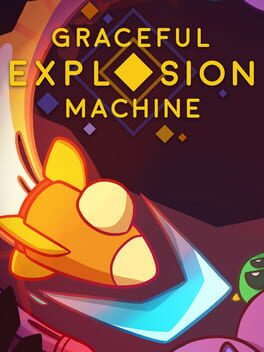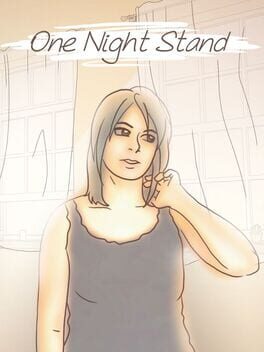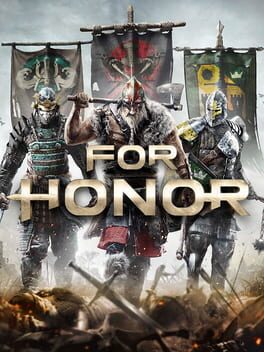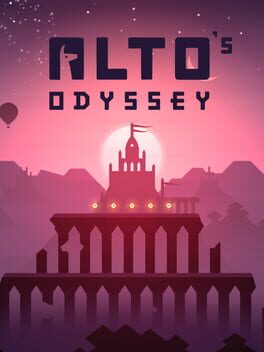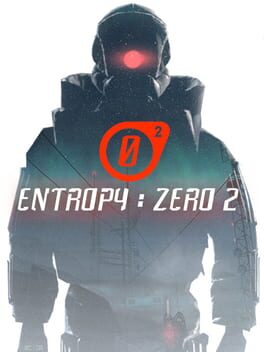Higloman
7 reviews liked by Higloman
Coromon
2022
Coromon wears it's inspiration on it's sleeve and makes sure that the sleeve is rippling with muscle and sinew in it's improvements on the creature catching formula. Throughout its roughly 30 hour main story, Coromon reveals its brilliance in design, progression and balance that I have sorely wanted from Pokemon.
The story isn't compelling. You are tasked with going to the different regions of the continent to gather elemental stones to defeat the bad guys. Copy paste JRPG trope. It makes up for it though with a level of charm in how it's NPC's are written where it knows to not take itself too seriously.
The world design isn't that inspired either. There's a spooky place, an ice place, a fire place. It's all very tropey. But the overworld itself and the way that the player solves puzzles through it is a welcome change of pace. I have to highlight the real-time puzzles that required timing and precision over here as they really gave variety to the gameplay. Additionally, the way that the level curve of each of the zones and how the player progresses through them was done masterfully as I never felt the need to sit down and grind my mons in order to overcome the next hurdle. (Might have also been my team composition too). My only grip would be the lack of substantial post-game content. Pretty barebones once you finish the story.
The creature design is top notch. Almost every "mon" in the game made me want to adopt it into my party. (Enough for me to consider a replay.) Alas, I had to make sure that I carried a balanced team with me. I can't say much on the competetive side of things but it seems that the move list of each mon was designed so that each one of them can be viable in a singleplayer run. Much appreciated!
I really liked Coromon! I would love to see the developers expand on the world and the variety of mons out there! Great Game! 👍👍👍👍
The story isn't compelling. You are tasked with going to the different regions of the continent to gather elemental stones to defeat the bad guys. Copy paste JRPG trope. It makes up for it though with a level of charm in how it's NPC's are written where it knows to not take itself too seriously.
The world design isn't that inspired either. There's a spooky place, an ice place, a fire place. It's all very tropey. But the overworld itself and the way that the player solves puzzles through it is a welcome change of pace. I have to highlight the real-time puzzles that required timing and precision over here as they really gave variety to the gameplay. Additionally, the way that the level curve of each of the zones and how the player progresses through them was done masterfully as I never felt the need to sit down and grind my mons in order to overcome the next hurdle. (Might have also been my team composition too). My only grip would be the lack of substantial post-game content. Pretty barebones once you finish the story.
The creature design is top notch. Almost every "mon" in the game made me want to adopt it into my party. (Enough for me to consider a replay.) Alas, I had to make sure that I carried a balanced team with me. I can't say much on the competetive side of things but it seems that the move list of each mon was designed so that each one of them can be viable in a singleplayer run. Much appreciated!
I really liked Coromon! I would love to see the developers expand on the world and the variety of mons out there! Great Game! 👍👍👍👍
This is a game that thrives on its mechanics. There isn't any real story. The presentation and soundtrack are nice, but don't really stand out. Each stage is basically just a looping horizontal cave with hordes of enemies spawning in and all you need to do is wipe everything out. You have a basic forward firing gun, a stronger sustained laser, a spinning blade for taking care of close enemies, and homing missiles that basically always hit something. Every weapon other than the basic one uses a shared energy meter that recharges over time or by picking up items dropped by enemies. If it runs out, you're stuck with just your basic gun until it completely refills. Your basic gun doesn't draw from the energy bar, but if you use it for too long the rate of fire slows down to a craw. This encourages the player to balance their special attacks with their basic weapon and weave them together to dispatch your foes. The game also has a recharging dodge that covers about a quarter of the screen, creating a game that plays like a bullet hell, but feels oddly reminiscent of a character action game.
One Night Stand
2016
So I had neither played a visual novel before, nor did the term pop up despite my interest in story driven point'n'click. But I had the spare 99 points for the game being on sale at the Nintendo eStore and One Night Stand somehow caught my attention. A sex game on family friendly Nintendo?! Not quite.
According to Wikipedia Lucy Blundell got the idea for her game debut One Night Stand while watching a miserable looking man on public transportation. She then rotoscoped footage shot of herself via mobile and used a free visual novel software called Ren'Py. The rather visual short story turns out as a chamber play assuming the protagonist woke up hungover next to a naked woman. The being dizzy feels real.
So One Night Stand let's the player try to find out how he ended up in the situation as well as offering plenty of interactions to influence the outcome, i.e. how much of a walk of shame it's going to be. The interesting aspect here is no matter how cool you both try to handle it, it's at least a little awkward.
I was surprised One Night Stand was first released on Windows PC rather than a mobile device as your first intuitive playthrough will last a few minutes, but for me, there was a huge motivation to find out what would happen if I didn't try to act as myself.
So One Night Stand appeared to be the ideal game to return to every once in a while to try and see all the twelve ways to complete. On the other hand, I was curious enough to master that within two sessions. That could also have something to do with the game mechanics being close to what I know as point'n'click, something you can't take for granted in a visual novel as Our Worlds Is Ended just taught me more recently.
The Switch version of One Night Stand not only offers to actually play it on a portable device. You can also pick if you'd like to control it via touchscreen, pro controller or with motion control support using joy cons. As much as I like my pro controller, using touchscreen turned out to be most convenient to me, even though I prefer not having to clean the screen from my prints all the time.
From my perspective One Night Stand was a great introduction to the format that way, as interaction still felt something like a puzzle whilst it was actually a maze of morality to a rather elaborate story told from a mid to end twenties point of view. Though that still is quite young to me, grown out of the demand for party nights let alone sexual adventures on that level, it's on the other hand a lot less juvenile than games I'm aware of to handle sexually related topics.
That still doesn't exclude the opportunity to put on her panties and try to get away with it, but details like this are rather a refreshing humorous turn of events to expand the variety of behaving like a jerk than an actual puberty joke.
I liked that about One Night Stand a lot. There are certain limits of exploration when it comes to details like the woman's dissimilar id's, but it doesn't seem to be the point to find out the exact story why she might have or use these. Most of us can imagine that and an ellipsis in these cases is probably more exciting than the plain explanation. It's more about how good of an idea it is to search her wallet while she's in the bathroom in the first place.
I guess if you didn't bring up the empathy before you played One Night Stand, there's an actual chance for you to learn your date is a human being with emotions, too. And that's quite reasonable as legitimation for whatever you're bold enough to try in this game.
So you ended up in bed together after having too many drinks. Shit happens. People of all genders do that. Doesn't matter. Is that a reason to take a snap of her sleeping naked to show your friend? You'll eventually find out. And then you hopefully learn through communication that this woman is actually nice and you don't really want to do anything like walking out while she's throwing up in the toilet.
One Night Stand is a beautifully realistic take on virtue and temptation of quite regular people, who got into a situation they can't even remember. It's up to the player to decide what's best to handle while having the freedom to experiment. I think though most of us wish in the end to have met under other circumstances. At least I was able to get to know an interesting person I would like to spend more time with if I was the protagonist.
That's quite an achievement for a program some people see as just a short game. In fact, I even saw it as a goal to try and make it last as long as I could, depending on behaviour. I'd say One Night Stand is one of those indies to profit from not having to match any standards, being good at being what they are and eventually finding their audience. If there's more like this, I'd love to play it.
According to Wikipedia Lucy Blundell got the idea for her game debut One Night Stand while watching a miserable looking man on public transportation. She then rotoscoped footage shot of herself via mobile and used a free visual novel software called Ren'Py. The rather visual short story turns out as a chamber play assuming the protagonist woke up hungover next to a naked woman. The being dizzy feels real.
So One Night Stand let's the player try to find out how he ended up in the situation as well as offering plenty of interactions to influence the outcome, i.e. how much of a walk of shame it's going to be. The interesting aspect here is no matter how cool you both try to handle it, it's at least a little awkward.
I was surprised One Night Stand was first released on Windows PC rather than a mobile device as your first intuitive playthrough will last a few minutes, but for me, there was a huge motivation to find out what would happen if I didn't try to act as myself.
So One Night Stand appeared to be the ideal game to return to every once in a while to try and see all the twelve ways to complete. On the other hand, I was curious enough to master that within two sessions. That could also have something to do with the game mechanics being close to what I know as point'n'click, something you can't take for granted in a visual novel as Our Worlds Is Ended just taught me more recently.
The Switch version of One Night Stand not only offers to actually play it on a portable device. You can also pick if you'd like to control it via touchscreen, pro controller or with motion control support using joy cons. As much as I like my pro controller, using touchscreen turned out to be most convenient to me, even though I prefer not having to clean the screen from my prints all the time.
From my perspective One Night Stand was a great introduction to the format that way, as interaction still felt something like a puzzle whilst it was actually a maze of morality to a rather elaborate story told from a mid to end twenties point of view. Though that still is quite young to me, grown out of the demand for party nights let alone sexual adventures on that level, it's on the other hand a lot less juvenile than games I'm aware of to handle sexually related topics.
That still doesn't exclude the opportunity to put on her panties and try to get away with it, but details like this are rather a refreshing humorous turn of events to expand the variety of behaving like a jerk than an actual puberty joke.
I liked that about One Night Stand a lot. There are certain limits of exploration when it comes to details like the woman's dissimilar id's, but it doesn't seem to be the point to find out the exact story why she might have or use these. Most of us can imagine that and an ellipsis in these cases is probably more exciting than the plain explanation. It's more about how good of an idea it is to search her wallet while she's in the bathroom in the first place.
I guess if you didn't bring up the empathy before you played One Night Stand, there's an actual chance for you to learn your date is a human being with emotions, too. And that's quite reasonable as legitimation for whatever you're bold enough to try in this game.
So you ended up in bed together after having too many drinks. Shit happens. People of all genders do that. Doesn't matter. Is that a reason to take a snap of her sleeping naked to show your friend? You'll eventually find out. And then you hopefully learn through communication that this woman is actually nice and you don't really want to do anything like walking out while she's throwing up in the toilet.
One Night Stand is a beautifully realistic take on virtue and temptation of quite regular people, who got into a situation they can't even remember. It's up to the player to decide what's best to handle while having the freedom to experiment. I think though most of us wish in the end to have met under other circumstances. At least I was able to get to know an interesting person I would like to spend more time with if I was the protagonist.
That's quite an achievement for a program some people see as just a short game. In fact, I even saw it as a goal to try and make it last as long as I could, depending on behaviour. I'd say One Night Stand is one of those indies to profit from not having to match any standards, being good at being what they are and eventually finding their audience. If there's more like this, I'd love to play it.
For Honor
2017
I have lots of great memories playing this game with friends during launch and the months afterwards even though it was a complete mess. Ubisoft did end up fixing and adding some cool things over time into the game but just not fast enough. Plus all the monetization and crap servers in a full priced game didn't help.
I can't help but feel out of all the Ubisoft games that force a generic open world that it would have actually benefited the For Honor campaign. Pick a starting class as Knight, Viking, or Samurai and have different starts for each one. Hell, when they did DLC they could've added more to the campaign adding replay value but I know that's asking to much of small indie company Ubisoft.
All frustrations aside if they announced a sequel that isn't the same game with a fresh coat of paint I would be genuinely excited to see what it would be like and would probably end up getting it at some point. If they can make a game that changes the parrying to be more like Sekiros and the servers are actually good I'd buy in a heartbeat.
I can't help but feel out of all the Ubisoft games that force a generic open world that it would have actually benefited the For Honor campaign. Pick a starting class as Knight, Viking, or Samurai and have different starts for each one. Hell, when they did DLC they could've added more to the campaign adding replay value but I know that's asking to much of small indie company Ubisoft.
All frustrations aside if they announced a sequel that isn't the same game with a fresh coat of paint I would be genuinely excited to see what it would be like and would probably end up getting it at some point. If they can make a game that changes the parrying to be more like Sekiros and the servers are actually good I'd buy in a heartbeat.
Alto's Odyssey
2018
Entropy: Zero 2
2022
A nice reminder of how Half Life 2 has forever altered gaming and an extremely impressive mod made by a small team that manages to do a few things even better than Valve originally did. Ultimately, it's more of a tight game than a mod and it has some slight bumps detracting from a perfect score, but if you're a fan of HL2, there's no doubt this is a must-try.
You don't have to play the first to dive into the second, if you were worried. Though that is probably worth trying, too, there's no question the sequel is an upgrade. Its plot is similar to the alternate campaigns for Half Life, like Opposing Force, where you're another influential character doing his own business while other important things are happening simultaneously. In this case, Gordon Freeman is escaping City 17 and you're hunting Judith Mossman. It's more important to know what's happening in not just Half Life, but the Portal series to fully appreciate what's happening in Entropy: Zero 2. The plot is loaded with tie-ins and nods, though it's somewhat lacking in any depth the original series managed to establish, and is one of the weaker part of the experience.
Gunplay is basically ripped right from HL2, added in is the MP5, which has a tight-patterned burst fire that's very useful for distance kills and full auto for when you need to rock 'n' roll on a group. There's also a Xen grenade that sucks everything near it into a portal to the god-knows-where planet, and swaps them with some aliens in return. This grenade isn't too useful for fights, as you'd just be swapping enemies for more enemies, but rather has a few fun puzzles in the game where they're necessary.
In another nod to HL2:E2, there's a "companion" to bring along with you for most of the campaign. Unlike HL2:E2's Gnome Chomsky, here Wilson will actually speak to you pretty frequently and makes many contextual remarks. If you're reading this before playing the game, bring Wilson with you the whole way, it's worth it. It's by far the better experience and clearly intended. He's not as much of a burden as that Chomsky fella.
It's fun becoming Death and just wiping out rebels as 3650. You'll like having your fellow Combine alongside you as you do the obviously morally wrong thing. The beginning part with the Portal references is a bit of a drag, but once of you get the vehicle it's pretty solid from there out. Again, if you like Half Life 2, do yourself a favor and try this out. It's a good mix of nostalgia and with a now-speaking main character on his own Combine plotline, there's enough "new" to keep it fresh. Check out Entropy: Zero 2, it's free on Steam if you own HL2!
You don't have to play the first to dive into the second, if you were worried. Though that is probably worth trying, too, there's no question the sequel is an upgrade. Its plot is similar to the alternate campaigns for Half Life, like Opposing Force, where you're another influential character doing his own business while other important things are happening simultaneously. In this case, Gordon Freeman is escaping City 17 and you're hunting Judith Mossman. It's more important to know what's happening in not just Half Life, but the Portal series to fully appreciate what's happening in Entropy: Zero 2. The plot is loaded with tie-ins and nods, though it's somewhat lacking in any depth the original series managed to establish, and is one of the weaker part of the experience.
Gunplay is basically ripped right from HL2, added in is the MP5, which has a tight-patterned burst fire that's very useful for distance kills and full auto for when you need to rock 'n' roll on a group. There's also a Xen grenade that sucks everything near it into a portal to the god-knows-where planet, and swaps them with some aliens in return. This grenade isn't too useful for fights, as you'd just be swapping enemies for more enemies, but rather has a few fun puzzles in the game where they're necessary.
In another nod to HL2:E2, there's a "companion" to bring along with you for most of the campaign. Unlike HL2:E2's Gnome Chomsky, here Wilson will actually speak to you pretty frequently and makes many contextual remarks. If you're reading this before playing the game, bring Wilson with you the whole way, it's worth it. It's by far the better experience and clearly intended. He's not as much of a burden as that Chomsky fella.
It's fun becoming Death and just wiping out rebels as 3650. You'll like having your fellow Combine alongside you as you do the obviously morally wrong thing. The beginning part with the Portal references is a bit of a drag, but once of you get the vehicle it's pretty solid from there out. Again, if you like Half Life 2, do yourself a favor and try this out. It's a good mix of nostalgia and with a now-speaking main character on his own Combine plotline, there's enough "new" to keep it fresh. Check out Entropy: Zero 2, it's free on Steam if you own HL2!
WarioWare: Touched!
2004
Touched is one of the most emblematic DS games on the system as a sort of tech demo, for better or for worse. It really does feel like one of the first games (alongside Nintendogs) specifically created to show off the new interactive functions and prowess of their new handheld system but with the classic WarioWare formula of quickfire and absurd minigames coupled with a colorful cast caught in the strange customs of their day. So here, the package consists of a few microphone microgames that you can generally win by shouting at the system loudly enough, and then the rest of the catalogue are all microgames where you either tap the screen or move your stylus in a line. I applaud the team for disguising this well enough with all the vignettes combined with the "tutorials" at the beginning of each section (i.e. Ashley's section is dragging, Crygor's section is "spinning", etc), but ultimately you are just repeating the same two actions. The unlockable minigames are about what you'd expect from the system as well: there's a coloring book, a "ping pong paddle bounce the ball as long as you can" simulator, a game called "Orbit Ball" which is more or less the same concept as the ping pong ball simulator but now you want to launch your smiley ball as far up as possible with trampolines, a minigame where you just have to blow/yell into the mic as long as possible to keep him in the air for a high score, you get the idea. Oh, and a metronome for some reason.
It's not a bad game per se, but it is probably the most by the books WarioWare title I've played to date; it utilizes the unique features of the DS well enough, but at no point did I feel surprised or blown away. It's basically on the opposite end of the spectrum from Smooth Moves in my view; where I think Smooth Moves attempted to make the controls much more complex with a variety of different poses and motions necessary using the WiiMote, Touched more or less simplifies this to DS touchscreen controls where you either tap or drag, to the point where I thought most of the microgames were quite trivial and in fact never experienced a single game over. And fortunately the great presentation from the GBA games has been upped with the stronger system specs and the upbeat soundtrack will help you stay engaged for a couple of hours, and Ashley's a nice addition to the cast. It's no WarioWare Twisted at the end of the day, but it's a solid enough outing if you just want a way to mess around with your DS system while bored on a train ride.
It's not a bad game per se, but it is probably the most by the books WarioWare title I've played to date; it utilizes the unique features of the DS well enough, but at no point did I feel surprised or blown away. It's basically on the opposite end of the spectrum from Smooth Moves in my view; where I think Smooth Moves attempted to make the controls much more complex with a variety of different poses and motions necessary using the WiiMote, Touched more or less simplifies this to DS touchscreen controls where you either tap or drag, to the point where I thought most of the microgames were quite trivial and in fact never experienced a single game over. And fortunately the great presentation from the GBA games has been upped with the stronger system specs and the upbeat soundtrack will help you stay engaged for a couple of hours, and Ashley's a nice addition to the cast. It's no WarioWare Twisted at the end of the day, but it's a solid enough outing if you just want a way to mess around with your DS system while bored on a train ride.

